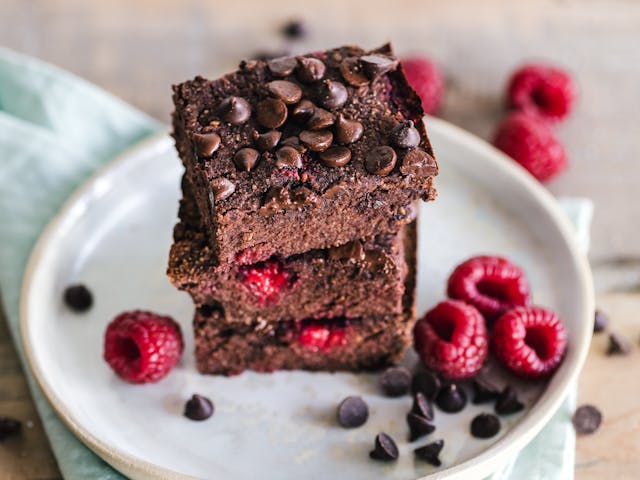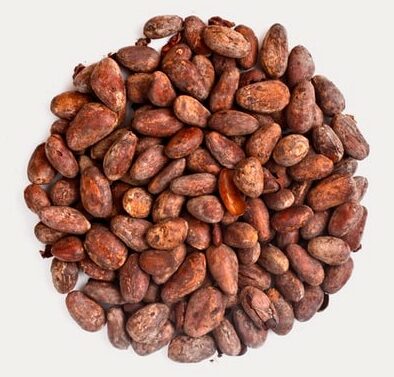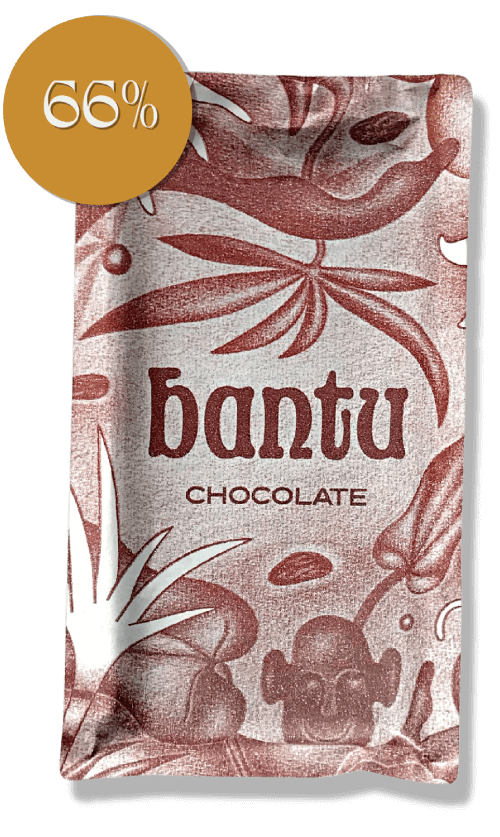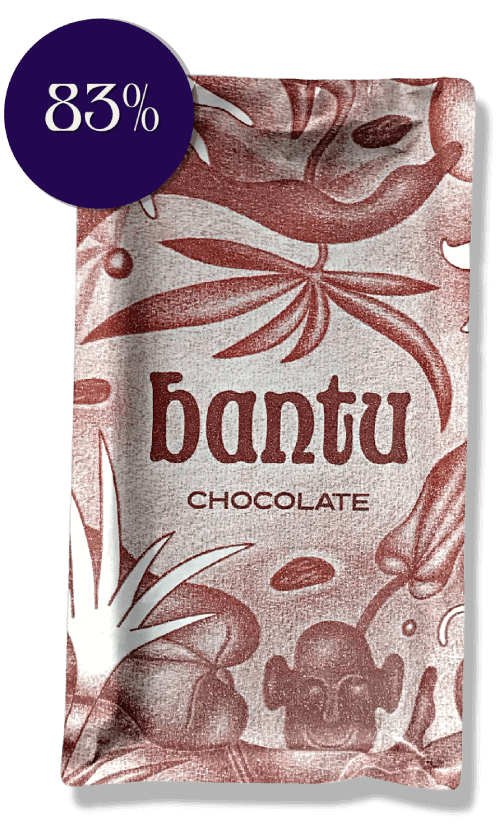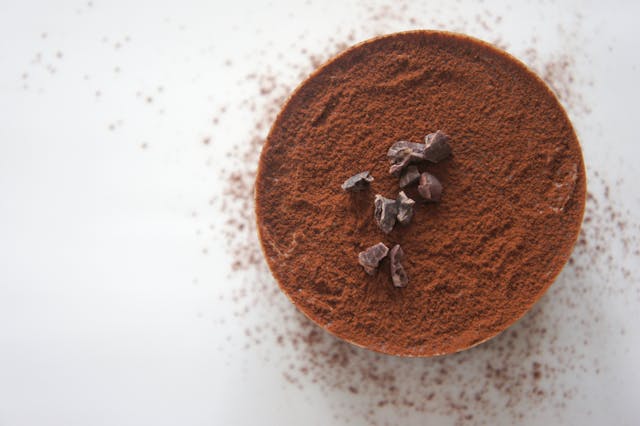
A Complete Guide to Cocoa Solids: From Bean to Bar in Craft Chocolate
September 19, 2024
Top Benefits of Cacao for Beauty & Wellness
September 19, 2024Flavonoid-rich Foods
A Farm-to-table Perspective
Flavonoids are a group of plant substances with amazing health benefits in the food, pharmaceutical, and cosmetic industries.
This article explores these health benefits and highlights foods rich in flavonoids, with a special focus on cacao, the 2nd most abundant source of dietary flavanols.
We emphasize farm-to-table cacao because how food is processed from the farm to the final product affects the amount of flavonoids you get.
What are Flavonoids?
Flavonoids are a large group of natural compounds known for their health benefits, especially their potential to lower the risk of chronic diseases. They are found in different concentrations in the leaves, stems, flowers, and fruits of many plants.
Chemically, flavonoids are phenols, which just means they have hydroxyl groups attached directly to benzene rings in their chemical structure. What’s important to note is that there are different types of flavonoids depending on their structural features.
Types of Flavonoids
There are 7 subgroups of flavonoids found in common food plants. Each subgroup of flavonoids contains hundreds or thousands of individual compounds.
According to a 2023 review, over 10,000 individual flavonoids have been identified. Their differences stem from minor variations in structural features, but the health benefits remain similar.
1. Flavones
Flavones are present in leaves, flowers, and fruits, with major plant sources like parsley, celery, red pepper, chamomile, mint, and gingko biloba.
2. Flavanols (catechins)
Flavanols are found abundantly in tea, cacao, bananas, apples, blueberries, peaches and pears.
3. Flavonols:
Flavonols occur in a variety of fruits and vegetables such as asparagus, kale, onions, lettuce, broccoli, tomatoes, apples, grapes, and berries. They’re also found in tea and wine.
4. Flavanones:
Flavanones are found in citrus fruits like oranges, lemons, limes, mandarins, and grapes.
5. Isoflavones:
Isoflavones are phytoestrogens (plant oestrogens) with a limited distribution in the plant kingdom, mostly found in soybeans and other leguminous plants.
6. Anthocyanins:
Anthocyanins are present mostly in the outer cell layers of various fruits such as black currants, grapes, and berries. They’re also abundant in chickpeas.
7. Chalcones:
These occur in tomatoes, pears, berries, and strawberries.
Some sources have 2 additional subgroups of flavonoids. Flavanonols and neoflavonoids found in non-food plants and used in the cosmetic and pharmaceutical industries.
Flavonoids vs. Flavanols
Some people use flavonoids and flavanols interchangeably, but they are not the same thing. Flavonoids refer to the broad name for phenolic plant compounds known for their health benefits, while flavanols are a subgroup of flavonoids. Flavanols are also known as catechins or flavan-3-ols.
All flavanols are flavonoids, but there are other flavonoids that are not flavanols. These include flavones, flavanones, isoflavones, flavonols, anthocyanins, and chalcones.
Food Sources of Flavonoids
Flavonoids are found in different parts of many plants and in food preparations from these plants. Each food class contains different types of flavonoids.
Note that these are merely food sources and not an indication of how abundant a food item is in flavonoids (see next section on flavonoid-rich-foods).
Fruits: bananas, apples, peaches, pears, oranges, lemons, limes, mandarins, grapes, and berries (including black currants).
Vegetables: sorrel (spinach dock), onions, lettuce, celery, red pepper, asparagus, kale, tomatoes, and broccoli.
Seeds/nuts: cacao, soybean, chickpea, pecan.
Spices/herbs: parsley, oregano, chamomile, mint, and gingko biloba.
Beverages: Tea and wine.
Top Flavonoid-Rich Foods (FRFs)
Flavonoids are found in many plants but in different concentrations. To get the most of their medicinal benefits, it’s necessary to consume food items abundant in these health-promoting compounds.
A 2020 review compiled the content of flavonoids in 100g of food items in different food sources. The food items with at least 100 mg of flavonoids per 100 g included:
– Parsley (fresh and dried)
– Oregano (fresh and dried)
– Berries
– Chickpeas
– Green tea
– Black tea
– Dark chocolate
– Sorrel (spinach dock)
Some food items have more than one type of flavonoids in different amounts. It’s also important to note that several factors affect the amount of flavonoids present in a final food product. These include cultivation and post-harvest processing.
Vary your recipes to get as many flavonoids as possible from the various subgroups.
1. Parsley
Parsley is a powerhouse of flavonoids, containing both high amounts of flavones and flavonols. When dried, parsley has more flavonoids per 100g than when still fresh.
2. Oregano
This mint look-alike herb is rich in flavones and flavanones, especially when dried. It showed at least 7 times the amount of flavanones from any citrus fruit per 100g. Interesting, because flavanones are mostly found in citrus fruits.
3. Berries
Berries are another powerful source of dietary flavonoids, covering mostly the anthocyanins subgroup, although some also have flavonols and flavanols. Berries identified with at least 100mg of flavonoids in 100g include:
-Elderberry juice
-Fresh caper berries
-Aronia (chokeberry)
-Blackberry
-Blueberry
-Black currants
-American bilberry
4. Chickpeas
This leguminous seed is a rich source of anthocyanin flavonoids and may have as much as 200mg in 100 grams.
5. Tea (green and black)
Tea comes from the leaves of Camellia sinensis as green or black tea depending on how the leaves are treated after harvest. Green tea and black tea are rich in flavanols in almost identical quantities.
6. Dark chocolate
Dark chocolate is abundant in flavanols and has smaller amounts of other flavonoid subgroups. Dark chocolate can have as much as 108mg flavonoids in 100 grams. The amount varies from brand to brand.
7. Sorrel (spinach dock)
This leafy green vegetable/herb can contain as high as 102 mg of flavonols in 100 grams.
8. Other flavonoid-rich foods
This list includes flavonoid-rich foods that are not as rich as those mentioned above. The concentration of flavonoids here varied between 50 mg-90 mg per 100g of food item.
-Dried cocoa
Rocket lettuce
-Red currants
-Red onions
-Red cabbage
-Grapefruit
-Lemons
Evidence-Based Health Benefits of Dietary Flavonoids
Studies have shown that flavonoid-rich diets lower the risks of chronic conditions like cardiovascular diseases.
People who get total flavonoids reap more benefits. It is therefore advisable to vary your recipes to include as many classes of flavonoids as possible.
1. May Improve Cardiovascular Diseases (CVDs)
The antioxidant activities of flavonoids decrease the oxidation of low-density lipoproteins (bad cholesterol), leading to lower risk of heart disease and stroke.
Another way flavonoids benefit cardiovascular health is through vasodilation, which improves blood flow and lowers blood pressure.
2. May Offer Anti-inflammatory Benefits
One way the body responds to harmful stimuli is through inflammation. While this is beneficial in the short term, in some situations the process can be altered leading to chronic inflammation. Chronic inflammation increases the risk of conditions like cancer, diabetes, neurological disease, and cardiovascular disease.
Flavonoids hinder certain pathways in the inflammatory response, helping the body to find the right balance.
3. May Lower Risk of Cancer and Support Cancer Treatment
In addition to antioxidant effects that reduce inflammatory responses in body cells, flavonoids extracted from plants have also been shown to make cancer cells more sensitive to chemotherapy.
Numerous studies have shown that flavonoids may help lower your risk of cancer through the following mechanisms:
1. Suppression of cancer cell growth & spread.
2. Regulation of cell cycle: preventing the uncontrolled growth characteristic of cancerous tumours.
3. Apoptosis: forcing the death of damaged or unwanted cells.
4. Autophagy: removing unneeded or dysfunctional cell components.
4. May Improve Brain Function
Flavonoids have been shown to enhance cognitive function, which includes improvement in memory and thinking. This is believed to be through antioxidative actions.
Some flavonoids can cross the blood brain barrier and reduce inflammation which may help degenerative conditions like Alzheimer’s and Parkinson’s diseases.
Also, some research shows the benefit of flavonoids on brain function through the brain-gut axis.
5. May Help Metabolic Syndrome and Weight Management
Metabolic syndrome is a group of conditions that increases your risk of heart disease, stroke, and diabetes. People with metabolic syndrome have excess fat around the waist, high blood pressure, high blood sugar, and abnormal levels of cholesterol.
The Mediterranean Diet, rich in vegetables, fruits, nuts, whole grains and cereals, olive oil, and wine, which are excellent sources of flavonoids, has been shown to lower the risk of metabolic syndrome and obesity. Researchers believe this is possible through various mechanisms of action by flavonoids.
Cacao: The Flavonoid Powerhouse
Polyphenols make up about 12-18% of the fresh cacao bean dry weight. Of this amount, roughly 95% are flavonoids mostly as flavanols with smaller amounts of other subgroups such as flavones, flavonols, flavanones, and anthocyanins.
Cocoa is so rich in flavanols that the levels in cocoa products can get as high as over 100 mg per 100 grams.
The main flavanols in cocoa are the two monomers epicatechin and catechin, the building blocks for other flavonoids.
Human studies have shown the benefits of these phenolic compounds for general health and lower risk of chronic diseases.
However, not all cocoa products are the same in flavonoid content as post-harvest treatment can reduce the amount of flavonoids in the final product. For example, Dutching, a common method of treating cocoa powder with alkali to reduce bitterness, can reduce the amount of flavonoids by as much as 60 to 98 percent depending on the degree of alkalinization.
The levels of flavonoids in chocolate depend on the type of chocolate and the processing steps the cocoa bean went through. Generally:
– Dark chocolate is high in flavonoids because of its high cocoa solids
– Milk chocolate is also rich in flavonoids, but not as rich as dark chocolate.
– Meanwhile, white chocolate is not a good source of flavonoids because it lacks the non-fat cocoa solids that house cocoa’s flavonoids.
The quantity of flavonoids in cocoa powder varies because of processing. Dutch-processed or alkalized cocoa powder is very low in flavonoids compared to natural cocoa powder.
At Bantu Chocolate, we optimize processing with our farm-to-table, bean-to-bar practices that ensure our products are not only tasty but also nutritious and health-promoting.
The Journey from Farm to Table in Preserving Cacao Flavonoids
Farm-to-table is a business model in the food industry where the food manufacturer is also the farmer of the raw materials. The model offers the great advantage of absolute control over the supply chain, enabling the manufacturer to ensure sustainable and ethical practices.
In chocolate making, a farm-to-table brand is automatically bean-to-bar. Bean-to-bar indicates that the chocolate manufacturers starts with the dried cocoa bean instead of raw chocolate blocks or chocolate liquor.
READ ALSO: Complete Guide on Cocoa Solids from Bean to Bar in Craft Chocolate
Cacao is a super food if only its journey from the farm to table maintains or enhances its nutrient and micronutrient profile. Unfortunately, that is not always the case. There are cocoa products in the market whose only association with the cacao seed is maybe the brown chocolate colour.
Let’s look at how various stages of cocoa farming and bean processing affects its flavonoid content.
Maturity/pod storage
Flavonoids build up in the bean as the cacao fruit develops. Beans from fully mature cocoa pods are highest in flavonoids followed by semi-mature and early-stage mature pods. While beans from unripe and overripe pods have lower levels of bioactive compounds.
However, keeping ripe pods for a few days, instead of opening them up immediately after harvesting, reduces the amounts of bioactive compounds during bean fermentation.
It is necessary to have high-flavonoid beans as processing tends to reduce the levels of the phenols.
Fermentation
The unfermented cocoa bean is too acidic and bitter to eat, so fermentation is a necessary step in developing pleasant chocolate flavour.
Fermentation decreases the total phenolic content of cocoa beans by about 10-20%, though the anthocyanin subclass of flavonoids sees a slight increase. The longer the fermentation time, the greater the decrease in antioxidant properties.
The decrease occurs when these compounds react with others to form new compounds as the temperature increases inside the fermenting bean. The decrease also depends on the variety of the cocoa bean.
The length of fermentation affects the level of decrease. Some studies have also shown that the flavonoid content may initially increase, before decreasing as fermentation continues.
Drying
Fermented cocoa beans have about 55-60% moisture which needs to be reduced to about 7% so the beans can store and transport well without developing mould or breaking.
Drying can be achieved in several ways, using freeze-drying, direct sunlight, solar dryers, and oven dryers. The higher the temperature, the quicker the cocoa beans dry, but this is not good for its bioactive compounds.
Drying damages the levels of flavanols in cocoa, with solar and oven drying showing more loss than the traditional direct sunlight method and freeze drying. Freeze-drying uses the lowest temperature and therefore retains more flavonoids, but the method is not practicable for large scale bean drying in the tropics where cacao is farmed.
Roasting
Chocolate makers roast cocoa beans to reduce bitterness and improve taste and aroma. This needs higher temperatures and longer roasting times to destroy the alkaloids responsible for the bitterness in raw cocoa.
Roasting increases total phenolic content in cocoa due to other compounds in the bean breaking down into phenols and some flavonoids changing into others. But higher temperatures destroy some flavonoids, with the degree of loss influenced by the variety of the cocoa bean.
A recent study (published 2024) found that roasting at 150 °C for 15 minutes was optimal in maintaining high flavonoid content while reducing theobromine, the major alkaloid in cocoa.
Conching
Conching is the intense mixing of chocolate liquor to evenly distribute cocoa solids into cocoa butter. The process can go from 6 hours to a few days with temperatures ranging from 49 °C to 82 °C, depending on the type of chocolate. Conching enhances chocolate flavours, but unfortunately, reduces cocoa’s antioxidant capacity.
The Farm-to-table Advantage in Preserving Cocoa’s Flavonoids
The levels of flavonoids in cocoa products can vary from very low to really high. Bean variety and origin matter, but more importantly, how the farmer processes ripe beans during fermentation and drying. And even most importantly, what the chocolate maker does to the dried beans in the factory.
Being farm-to-table craft chocolate makers, we control the entire process, minimizing processing to preserve cocoa’s rich supply of flavonoids in the final products you get from us.
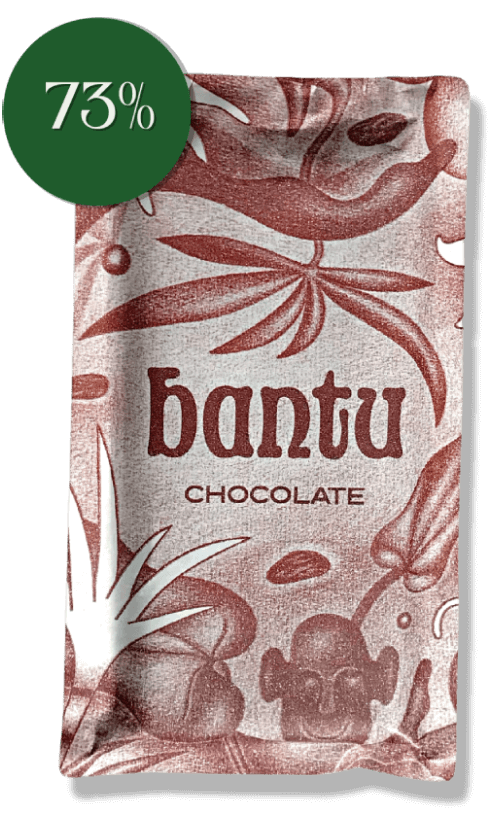
Noire 73% is one of 3 dark chocolate bars we craft in London with cacao beans from our farm in Cameroon
Tips to Maximise Flavonoid Intake from Food
Most flavonoid-rich foods are high in one or two subgroups of flavonoids than others. It is therefore recommended to eat foods from the different subgroups for total flavonoid intake.
Flavonoids from food are relatively safe to consume in moderate amounts because they come from common natural food sources.
– Eat a mixture of fruits, vegetables, herbs and spices, nuts, seeds, and beverages rich in flavonoids. For example, herbs like parsley are rich in flavones, tea and dark chocolate in flavanols, vegetables like sorrel (spinach dock) in flavonols, soybeans in isoflavones, berries in anthocyanins, and tomatoes in chalcones. In summary, vary your food recipes.
– Keep tab on the flavonoid content of your common foods. Flavonoids are a very large group counting over ten thousand individual compounds in different subgroups.
– Avoid highly processed foods because they’re likely to be low in flavonoids due to heat and chemicals degrading the polyphenols during processing.
Maximizing flavonoid intake from cocoa products
The levels of flavonoids in cocoa products like chocolate and cocoa powder can vary widely due to factors like bean origin and variety, post-harvest processing, and industrial processing techniques.
To maximize your intake of cocoa flavonoids:
– Choose dark chocolate over milk chocolate. White chocolate is not a good source of flavanols. The more the cocoa solids in a chocolate, the more the flavanols, provided the cocoa solids have not been treated with alkali.
– Choose natural cocoa powder over alkali treated cocoa powder. Treatment with alkali significantly reduces the amounts of flavonoids in cocoa.
– Store your cocoa and chocolate in a cool dry place. High temperatures tend to destroy flavonoids.
– Prioritize recipes that don’t use very high temperatures.
– Right dose for health benefits from cocoa flavonoids? Well, one study found that 49g of 71% dark chocolate has same quantity of flavonoids as 196ml of Tannat red wine, the daily wine intake recommended for lowering the risk of heart attack in adults with 70kg (154 pounds) body weight.
Some of Our Flavonoid-Rich Cocoa Products
Common Questions About Flavonoids
Does cooking affect flavonoids?
High temperatures tend to destroy flavonoids and reduce their antioxidant activities. To maximize your flavonoid intake, it is better to avoid recipes that call for high temperatures and longer processing times.
Key Takeaways
Flavonoids occur widely in many plants, in fruits, vegetables, seeds, nuts, grains, and plant-based products like tea and wine. Some foods are richer in some flavonoids than others.
Scientific studies have explored and continue exploring the health benefits of flavonoids in treating chronic conditions such as cardiovascular disease and neurodegenerative disease. Following a flavonoid-rich diet lowers the risk of developing these conditions.
Cocoa products like dark chocolate are among the top flavonoid-rich foods, especially abundant in flavanols. However, post-harvest processing can significantly reduce the levels of flavonoids in cocoa products. Farm-to-table brands that ensure minimal processing offer products with higher flavonoid content.
References
https://www.sciencedirect.com/science/article/pii/S0308814609011388
https://www.sciencedirect.com/science/article/abs/pii/S0308814614017488
https://aocs.onlinelibrary.wiley.com/doi/full/10.1002/aocs.12853
https://www.aimspress.com/aimspress-data/aimsagri/2023/2/PDF/agrfood-08-02-034.pdf
https://www.sciencedirect.com/science/article/pii/S266592712300062X
https://www.mdpi.com/1420-3049/27/7/2068
https://www.sciencedirect.com/science/article/pii/S027869152100154X
https://www.mdpi.com/1420-3049/27/3/719
https://link.springer.com/article/10.1007/s11101-007-9070-4
Chocolate Extinction: Fact vs. Fiction + What Chocolate Lovers Can Do
Chocolate ExtinctionFact vs. Fiction, What Consumers Can Do Share On Facebook Twitter Email Is the world really running out of chocolate? Not really. Currently the global […]
Corporate Chocolate Gifting Ideas to Appreciate Employees and Delight Clients
Corporate Chocolate GiftingHow to Appreciate Employees & Delight Clients Share On Facebook Twitter Email When it comes to corporate gifting, a one-gift-fits-all approach just doesn't cut […]
Cacao Supper Club at Home: Guide to Tasting Chocolate, Cacao Tea, and Pulp Juice
Cacao Supper Club at HomeGuide to Tasting Chocolate, Cacao Tea, and Pulp Juice Share On Facebook Twitter Email Imagine gathering around the table with a few […]


